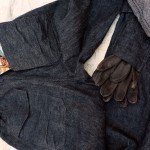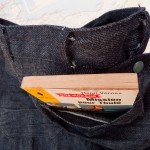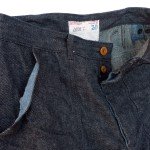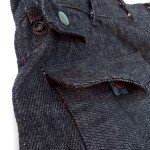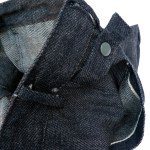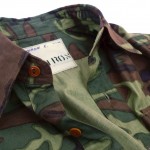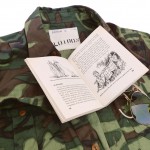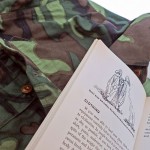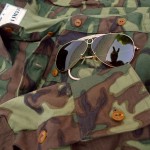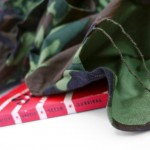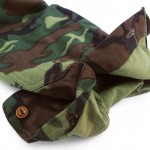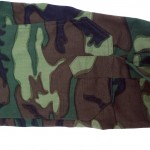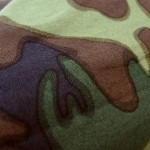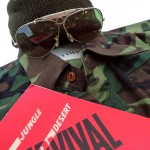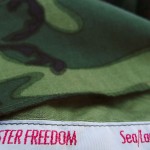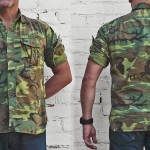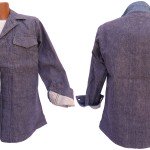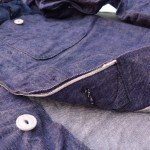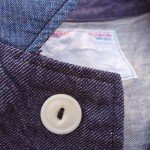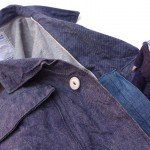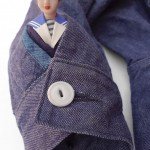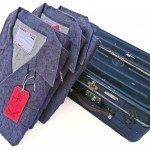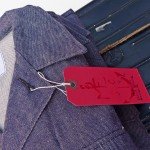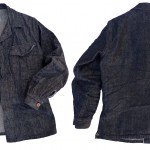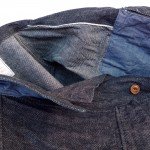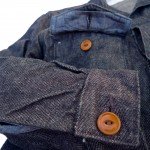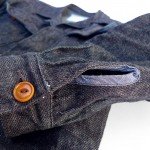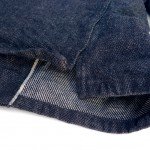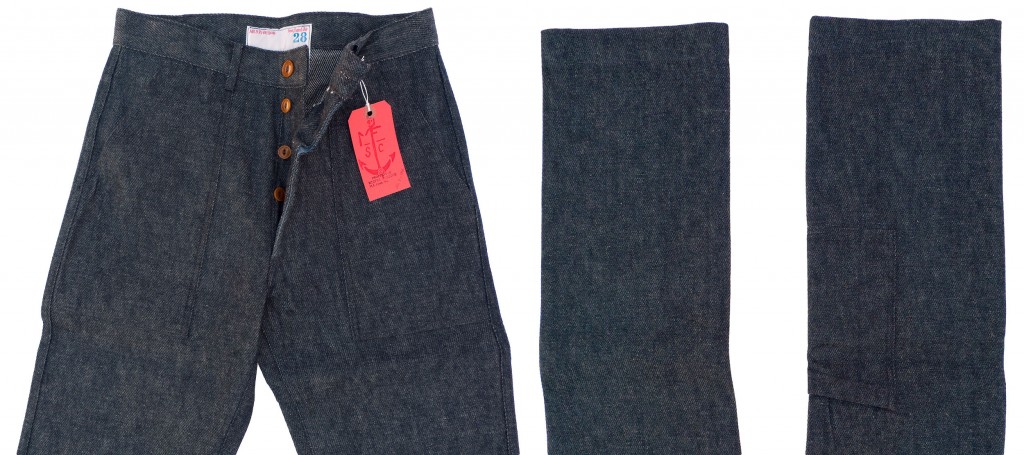 Raw/unwashed 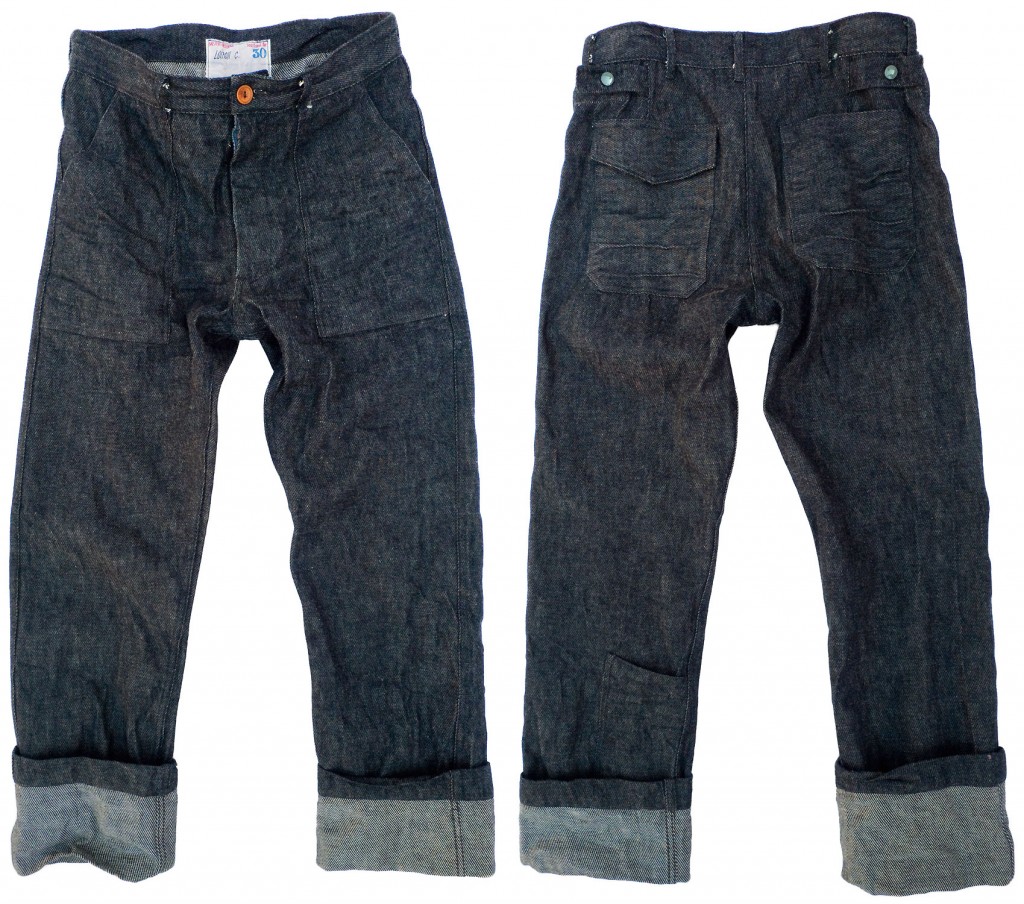 Cold soak/line dry/worn to shape while still damp.
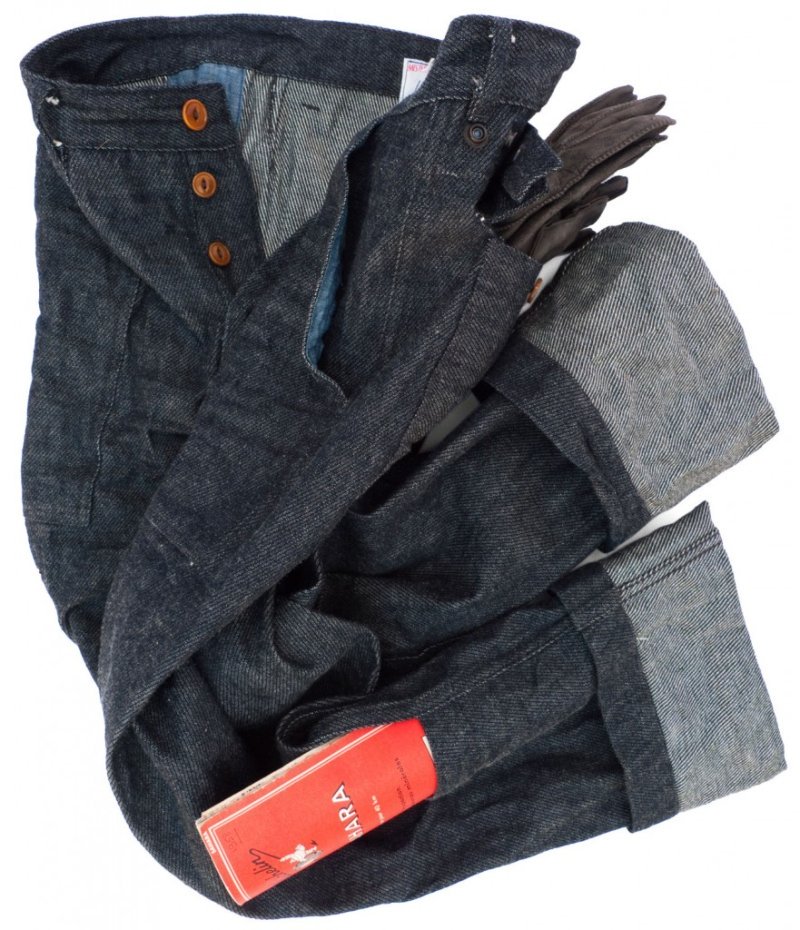
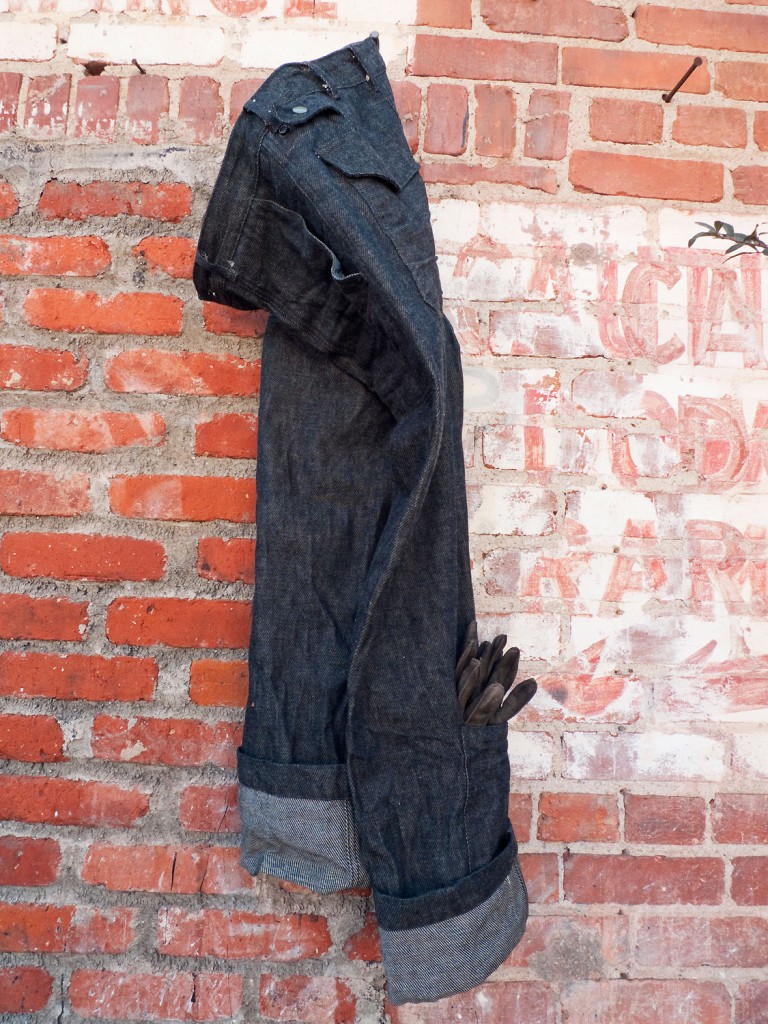
Mechanics Utility Trousers ‘Cavalry Twill’
“Sea Hunt” mfsc collection, Fall 2014
For those of you who wonder if we have come up with any bottoms for the Fall chapter of our “Sea Hunt” collection, one of the answer is right here.
We called in the USAF to the rescue on this one, and freely borrowed from a New Old Stock pair of 1957 -brace yourselves it’s a mouthful- “TROUSERS, UTILITY, COTTON, SAGE GREEN, CLASS 2, HEMMED BOTTOMS, SHADE 509”. Issued to Air Force mechanics in the mid 1950’s those original sage green sateen “grease monkey” britches featured front pleats and side tool pockets, but are mostly immediately recognizable by their long cinch-waist adjusting tabs.
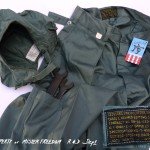 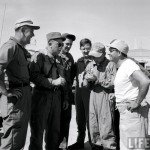 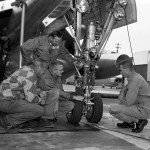
We have adapted the pattern and features of the vintage military work pants for our ‘Mechanic Utility Trousers’. If we kept the cool side tabs, off went the front pleats and side tool pockets. Instead we re-positioned a single extra pocket along the inseam of the left leg. It is ‘sandwiched’ in the flat felled seam and is located at mid-calf, not lower as our previous flight suit-inspired ankle pockets originally introduced in 2008 with the N1-K Deck Pants.
The back of the calf might seem like an unlikely location for a pocket, but it will be quite convenient for the many of us who fly jets daily.
Think about it next time you sit in the cockpit of your X-13 VertiJet. And let us know how easy we have made it for you to access your iPod playlists after take-off. We’re thoughtful like that.

Back to our Mechanics Trousers…
The side snap tabs will allow for quick cinched waist release, a special Thanks Giving feature.
The fabric we opted for is our original indigo ‘Cavalry twill’, previously introduced with our numéro deux Map Shirt.
This denim-like double twill is 9.7 oz. and features a solid white selvedge. In its unwashed state, this fabric appears to be dark blue-grey, but the warp yarn is actually indigo-dyed. After an initial cold soak, natural wear will bring out the indigo blue color over time.
The rear pockets appear to be lelt-hand twill denim, but are in fact only displaying the fabric horizontally, not vertically as the rest of the trousers. The fabric selvedge is folded inside the pocket, and is showing on the hem.
After the initial cold soak and line dry, the back pockets will shrink and torque slightly differently than the body. This is visible from the resulting subtle wrinkles. This is not a default but the specific character of our Mechanics Trousers rear pockets.
The ‘Cavalry Twill’ Mechanics Utility Trousers are designed in California by Mister Freedom®, and manufactured in Japan in collaboration with Sugar Cane Co. Fabric milled in Japan.
(Vintage USAF photos courtesy of jetpilotoverseas and aviationexplorer)
SPECS:
FABRIC:
100% cotton indigo ‘Cavalry twill’, 9.7 oz., solid white selvedge ID. Milled in Japan.
DETAILS:
* Pattern freely inspired by 1950’s USAF mechanics utility trousers.
* Patch front pockets.
* Single inner calf pocket.
* Button fly.
* Corrozo wood buttons, golden brown.
* Waist snap adjusting tabs.
* Rear patch pockets, single flap.
* Concealed selvedge on rear pocket folded hem.
* Cotton USN-type chambray button-fly facing and snap backing.
* Flat-felled seam construction.
* 100% cotton thread, tonal.
* Made in Japan.
WASHING/SIZING:
The mechanic trousers come raw/unwashed and will ‘technically’ shrink to tagged size. I opted for an original cold soak/line dry, which resulted in minimal shrinkage. I personally never use hot water/heat dryer for denim garments, which guaranties full shrinkage but also loss of color and excessive softening, in my opinion.
If you are opting for the cold soak/line dry, I recommend sizing down on these. I am usually a 32 in msfc bottoms, but went for a size 30, as I had done with the Spring 2014 Crew Pants.
I might hem them later, but decided to wear them with a fat cuff for a while.
The leg is still quite generous with a 30, and these are definitely not slim fitting, limiting the target audience to about 12 people Worlwide.
Again, maximum shrinkage to be expected with the use of hot water and heat dryer, although this is NOT recommended, as unnecessary loss of indigo dye and unattractive color marbling might occur.
This indigo cavalry twill fabric should be treated like premium indigo denim, as it will bleed, shrink/stretch, and fade with normal wear and subsequent washing.
When needed, hand wash in cold water with mild detergent and line dry.
Pleased see size chart for measurements. Please note that, for your reference, we have shrink-tested two waist 32. One cold-soak/line-dry for minimal shrinkage, and one cold-soak/heat-dry for further shrinkage.
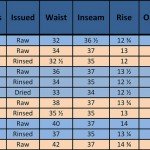
Available RAW/unwashed.
Waist Sizes: 28, 30, 32, 34, 36, 38
RETAIL $399.95
Available on www.misterfreedom.com
Email sales@misterfreedom.com or call 323-653-2014 with any questions unanswered above.
Thank you for your support.
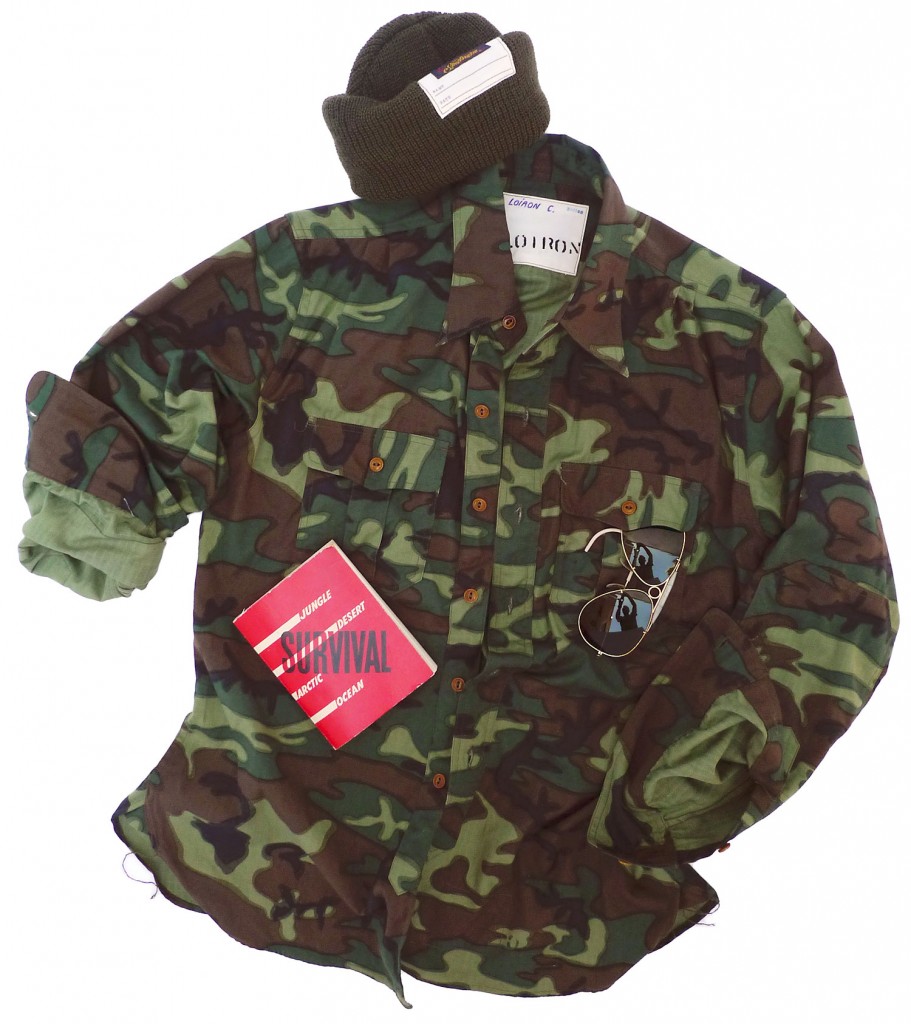
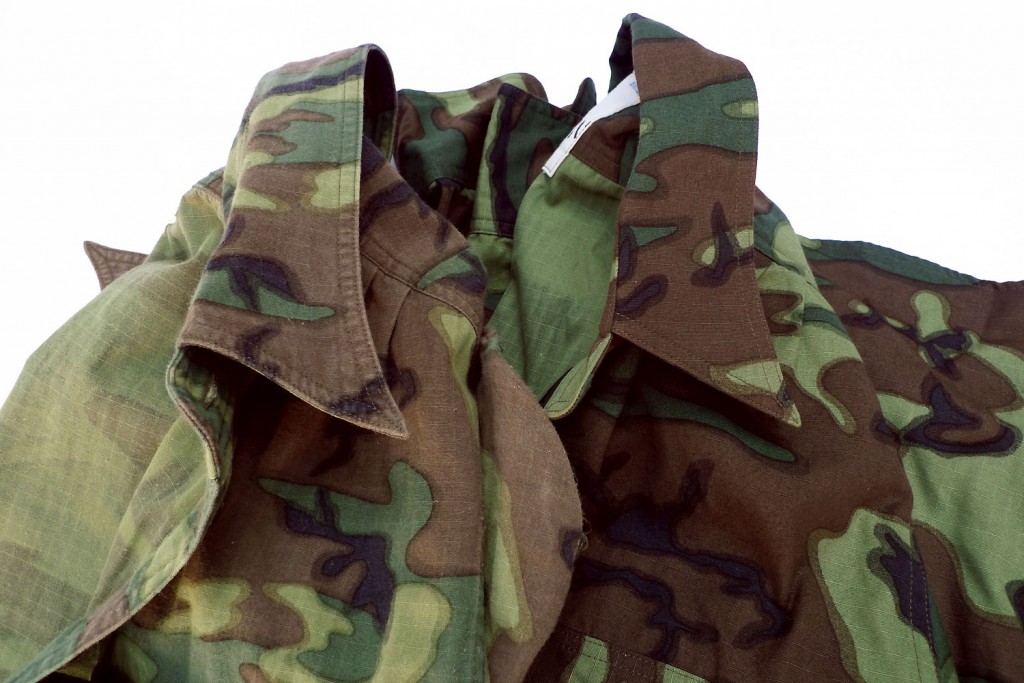 Well worn and washed vs. raw
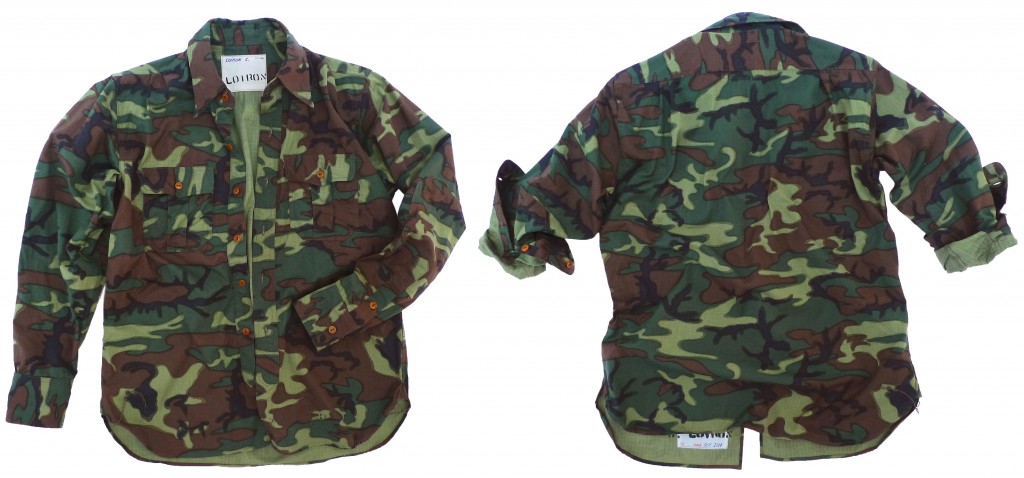
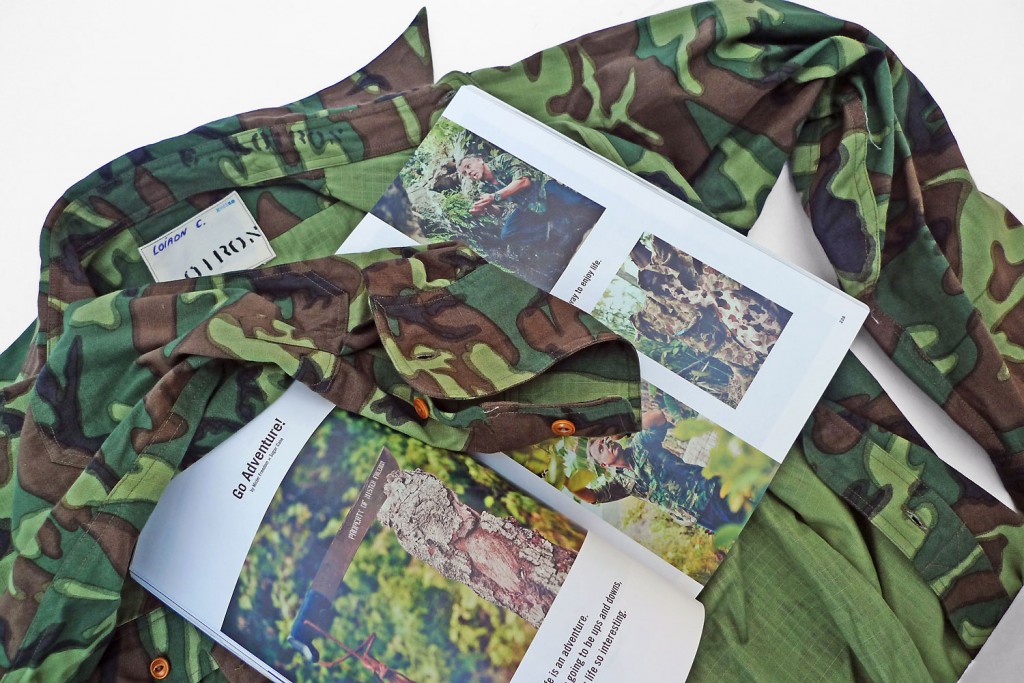 Clutch Magazine, Vol.22, November 2014. Please note that these are GREAT quotes, but NOT my quotes.
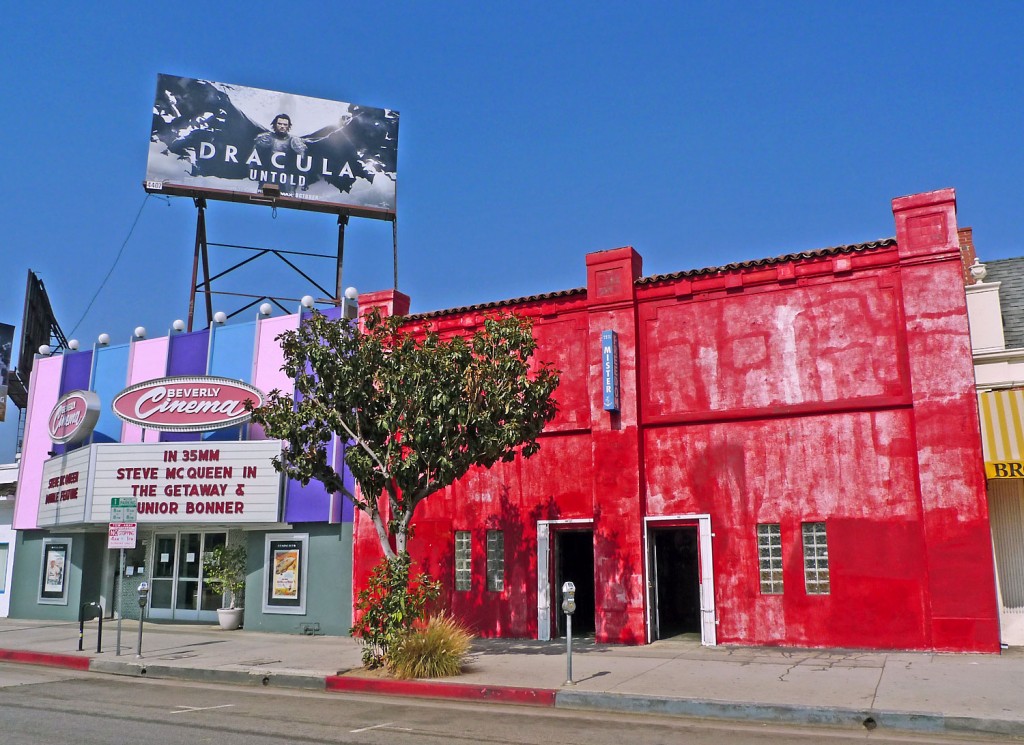 Just for a touch of color
ERDL Patrol Shirt
“Sea Hunt” mfsc collection Fall 2014
We are adding another option to our Patrol Shirt grouping. After introducing the arctic white, jungle green, USN-type chambray during the “Sea Hunt” Spring 2014 chapter, here is a camouflage number.
You are correct, there is also a blue one.
In the genuine camo family, “Lowland ERDL” is one that always caught my eyes, long before I knew its name. When rummaging through piles of military clothing in my raghouse-picking days, I seemed to consistently be drawn to its specific pattern/color combo.
Drawing attention is probably not what John Hopkins, chief designer of camouflage at the “Engineer Research & Development Laboratories” of Fort Belvoir, Virginia, had in mind when he designed the ‘leaf pattern’ in 1948…
This artistic attempt at blending in with nature was further developed at the US Army Natick Soldier Center by a team of experts led by scientist Alvin O Ramsley. (The brave few who submit themselves to these write-ups will note that we had already mentioned that legendary facility in a previous post, when introducing our Skipper Jackets.)
Subsequent testing and adapting of the still un-issued ‘leaf pattern’ lead to an official camouflage pattern referred to as ERDL. By 1967, it was optimized for the Vietnamese terrain.
A lime-dominant “Lowland” version was issued to US elite troops for their vacations in Southeast Asian jungles. Followed a brown-dominant “Highland” version (a tan color replacing the lime green), better suited for arid mountainous areas of the ski resort-type.
Within original vintage ERDL Vietnam-era fatigues, one will find quite a few variations of technically the same thing. My favorite tropical camies are those combining panels of both lowland and highland shades, the finest hours of the contractor QC department.
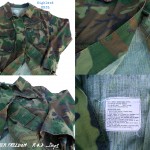
ERDL stayed a US Gov’t issue until 1981, when it eventually morphed into the ‘Woodland‘ pattern that replaced it.
When stealth became a part of specific jungle missions for our “Sea Hunt” team, ‘Lowland ERDL’ had plenty street cred and was quickly adopted. Such a mission has been captured on camera and some rare images can be seen in the November 2014 issue of Japanese CLUTCH Magazine. Viewer discretion is advised however, as the sheer thrill and daredevil requisites of that cliffhanger of an assignment are palpable on the photos, and could prove quite disturbing for some. Haunting stuff. You have been warned my friend. That six-page magazine spread is also punctuated by quotes I wish I had come up with, such as “Go adventure!”…
I did manage to p*** off a black rattlesnake with my walking stick, but that’s the one thing that is not on film.
Anyways, back to our design studio and the R&D phase. The original vintage sample we used to develop our interpretation of this classic camouflage is an authentic 1969-issued ‘Lowland ERDL’ bush hat found in ‘New Old Stock’ condition, still in its original clear plastic packaging. Until recently, an old Army/Navy surplus store in Oxnard, California, still had some of these sitting on its shelves…
As mentioned when introducing the P1942 Frog Skin camouflage fabric of our Map Shirt, the printing process for our ERDL fabric is complex, not computer-generated.
The base fabric, a 100% cotton ripstop popeline is originally stark white. Through rotary screen printing techniques, four colors in the distinctive ‘leaf pattern’ are applied to the face of the fabric, lime green/forest green/brown/black, with almost no bleed-though. The reverse of the fabric gets a solid lime green coat of ink.
If our colors were closely matched to those of the NOS bush hat, several other vintage ERDL samples were provided to the printing factory to instruct the ink experts on how we wanted our fabric to evolve overtime. Just as its original forefathers, our ERDL printed fabric will naturally fade.
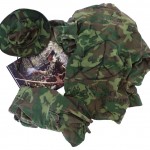 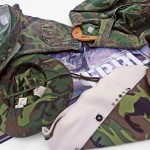
For those into the historical background of man-made camouflage, and fortunate to get their hand on a copy of the book, fascinating information can be found in Hardy Blechman’s “Disruptive Pattern Material” study.
Yet another fascinating book is the one displayed in the vintage ERDL gear shots above. It is the Vol.1 limited edition of “LRPP, Long Range Reconnaissance Patrol photos“, the works of Jay Borman. Thanks to Cory Piehowicz for the reference.
In terms of style, our Patrol Shirt is inspired by several vintage shirts from our archives, and is by no means a replica of Vietnam-era GI gear.
Throwing military/safari/uniform details in the MF® blender, the resulting garment is an apparently simple looking shirt. It features some fancy details however, most of which only the wearer will notice. This is not why people will stare at you while wearing this shirt, but take a look at the bottom of the button placket, on the inside, for some interesting folds and challenging pattern making magic.
Like its Spring 2014 predecessors, our ERDL Patrol Shirt features the usual elbow patches, box-pleat pockets, expansion ease-pleats, side gussets, rounded wrist cuffs…
The ERDL Patrol Shirt is designed in California by Mister Freedom® and manufactured in Japan in collaboration with Sugar Cane Co. Fabric milled and printed in Japan.
SPECS:
FABRIC:
100% cotton ripstop popeline, 4.75 oz., silkscreened with vintage 1960’s ERDL camouflage pattern.
Milled and printed in Japan.
DETAILS:
* All original mfsc pattern, inspired by vintage military, uniform and safari type shirting.
* Two box-pleat chest pockets, buttoned flap.
* Attractive 1940’s-style collar pattern.
* Early tailor-made custom uniform button placket.
* Elbow reinforcement patches.
* Side gussets.
* Double front & back expansion EZ-pleats on shoulder yoke.
* Corozo buttons, aka ‘ivory nut’, 100% wood, golden brown color.
* High stitch count 100% cotton tonal stitching.
* Vintage ½ cm wide flat-felled seam side construction.
* Double inside labeling: simple ‘minimalist’ neck patch (unbleached popeline stamped with sizing), and woven ‘Sea Hunt’ rayon label on bottom front panel (inside). Both to accommodate your own custom markings, if desired.
* Made in Japan
WASHING/SIZING:
This shirt comes raw/unwashed and will shrink to tagged size.
We recommend an original cold soak, spin dry and line dry.
Further care should be the low maintenance combo mild detergent/gentle cycle/cold water/line dry, as needed.
I wear a Medium in mfsc shirts and am a Medium in the ERDL patrol shirt.
Please refer to chart for cold rinse/line dry measurements.
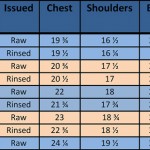
Available RAW/unwashed.
SIZES:
Small
Medium
Large
X-Large
XX-Large
Retail $329.95
Available from www.misterfreedom.com
Please call 323-653-2014 or email sales@misterfreedom.com with any questions not answered above.
Thank you sincerely for your support.
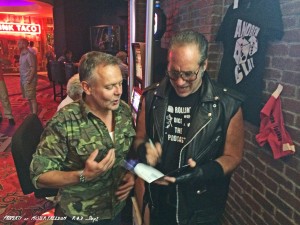 Field testing. Ooooh
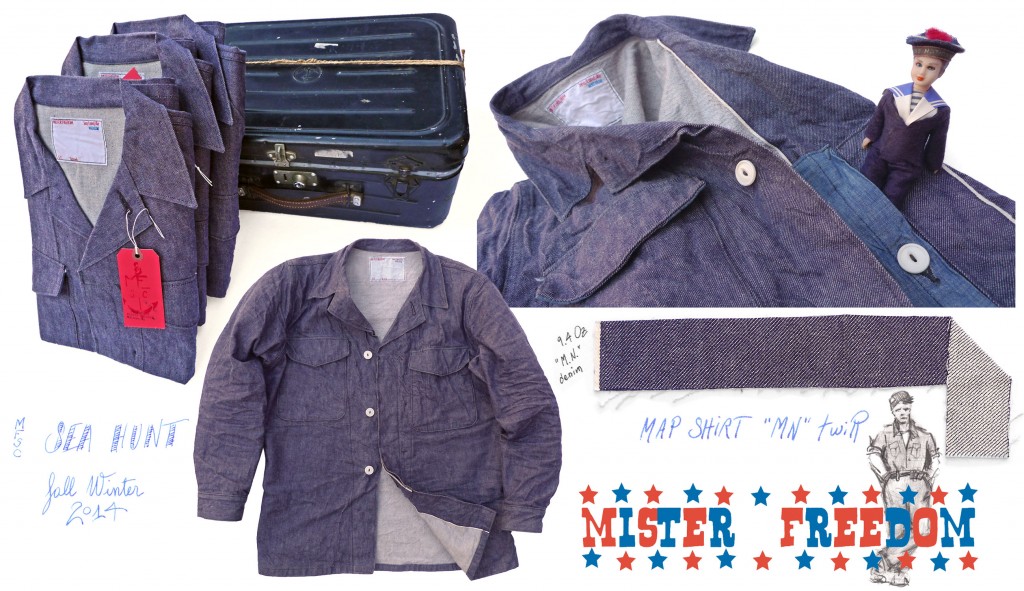
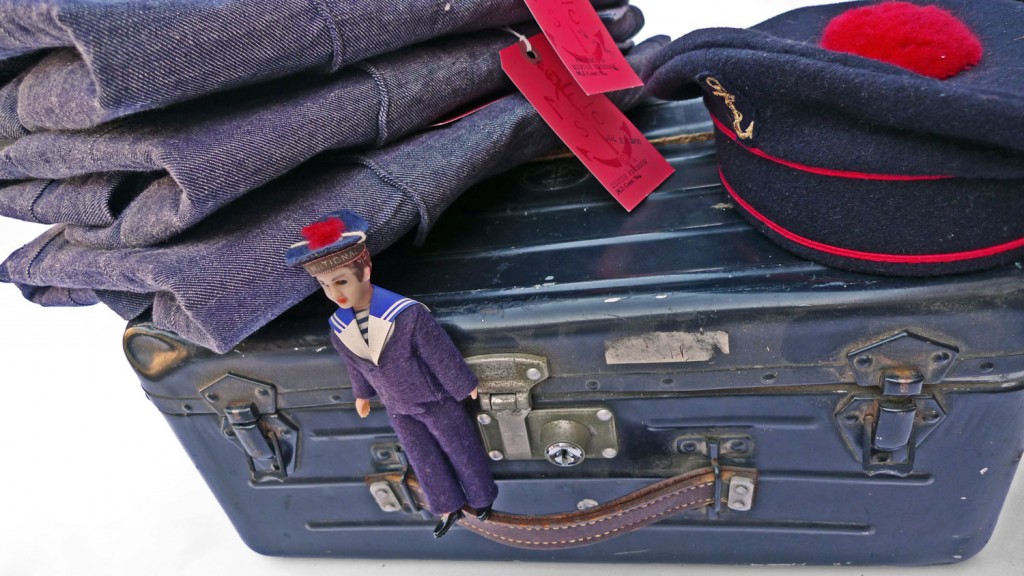

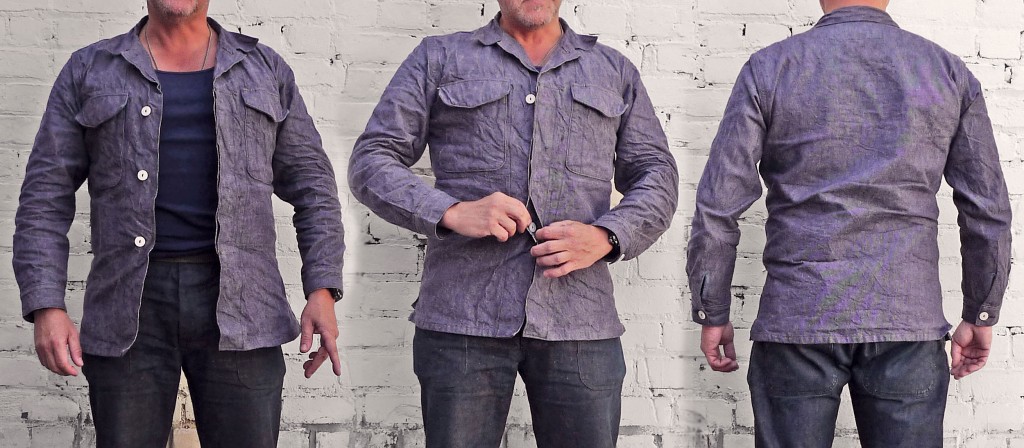
Map Shirt, “MN denim twill” issue
“Sea Hunt” mfsc Fall 2014
Here is numéro trois in our Map Shirt trilogy, its pattern as always inspired by the M1953 Utility Shirt issued to the Marine Corps in the 1950’s. For those feeling we have sufficiently milked that cow, knowing this is the final addition will come as a relief.
Having reached my batrachian-related joke quota I will respectfully mention that “MN” refers to “Marine Nationale“, aka the French Navy.
Sometime in the 1960’s, denim twill dungarees replaced the set of linen work clothes originally issued to French seaman recruits. These linen work tops and bottoms came in both white and bleu chiné. Our Spring 2014 Crew Pants, the “MN” model in cotton/linen, was a reference to that heather blue 1950’s version the cols bleus (the “blue collars”, aka the men with the red pompom) had in their sea bag.
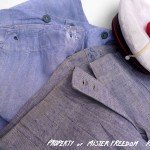 Vintage “Marine Nationale” linen work uniforms The cotton denim the French opted for as the replacement fabric for the work uniform in the 1960’s was in no way comparable to its dark indigo blue US Navy dungaree counterpart. It was much lighter in color. The warp had a definite purplish tone. The weft gave an almost solid white aspect to the reverse side of the denim.
I have to admit that I was not a big fan of that denim when the French Government decided to tell me what to wear in the mid 1980’s. Mostly embracing American culture courtesy of Hollywood at the time, sporting denim shorts (the summer issue of the work pants) and leather Hoh-Chi-Minh sandals, was quite the brutal departure from “The Wild One”, in my eyes. For years, I relegated that tenue n°105bis to squaresville. Until…
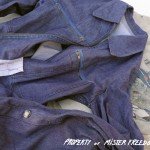 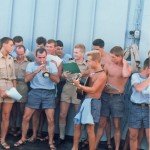
This denim eventually grew on me, as its own thing with its own History, to the point where it was no longer a pale version of something else.
Still referred to as bleu chiné in Naval circles, the contemporary Marine Nationale version of this work-clothes fabric is today made of a 65% poly and 35% cotton blend.
My fondness is limited to its earlier 100% cotton version.
The textile experts at Sugar Cane Co did an amazing job at instructing their factory in milling this “MN denim twill” from the authentic vintage swatches we had supplied. To be honest, the first fabric sample roll lacked the purplish hue and was too grey, but this production batch is spot on!
We chose to have it milled on shuttle looms, a costly process, opting for a solid white selvedge ID.
The result is an exclusive mfsc 9.4 oz. denim twill I am quite found of and proud to introduce for our “Sea Hunt” Fall 2014 chapter.
In our “Map Shirt” grouping, the pattern for the “MN” issue is shared with its “Cavalry Twill” sister, displaying the twill fabric selvedge on the front panel fold and on the button hole placket (only visible on the inside of the shirt).
For the batrachian-inclined, the frog skin version of our Map Shirt is discussed here and available there.
The “MN” Map Shirt is designed in California by Mister Freedom® and manufactured in Japan in collaboration with Sugar Cane Co.
Fabric milled in Japan.
SPECS
FABRIC:
9.4 oz. denim twill, 100% cotton, solid white selvedge ID.
DETAILS:
* Pattern inspired my 1950’s UMSC-issued utility shirts.
* Comfortable over-shirt fit.
* USN-type chambray accents (collar facing, wrist gussets, pocket flap facing, inside pockets)
* Two chest pockets with flap closure.
* Concealed button front closure.
* Selvedge button hole placket and front panel fold.
* One large map inside pocket, side opening.
* One concealed chest pocket, top opening.
* White corozo buttons (these buttons are wood, NOT plastic).
* Side slits.
* Flat-felled seam construction.
* Tonal 100% cotton thread stitching.
* Made in Japan.
WASHING/SIZING:
This garment comes raw/unwashed and will shrink to tagged size after an original cold soak/line dry.
I soak mine, spun dry and wore it damp to shape it. It fully dried on a hanger overnight and was crispy and ready to wear in the morning. Do not be alarmed if the fabric wrinkles, this is normal and not a defect.
Our Map Shirt is intended to be quite a comfortable fitting garment, easy to wear over a chambray shirt, a Tshirt… If you are a Medium in mfsc jackets/shirts, you are a Medium in the “MN” Map Shirt.
Maximum shrinkage to be expected with the use of hot water and heat dryer, but is NOT recommended, as unnecessary loss of color and unattractive marbling will occur.
This “MN” denim twill will eventually fade a bit with normal wear and subsequent washing, but the contrasts will not be as gratifying as the honeycomb-obsessed dream about.
When cleaning is required, we recommend hand washing in cold water with mild detergent and line dry.
Please refer to sizing chart for raw/rinsed measurements.
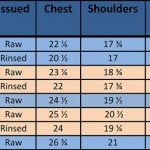
Available Raw/unwashed.
Sizes S, M, L, XL, XXL
Retail $349.95
Available from www.misterfreedom.com
Please call 323-653-2014 or email sales@misterfreedom.com with any questions not answered above.
As always, thank you sincerely for your support
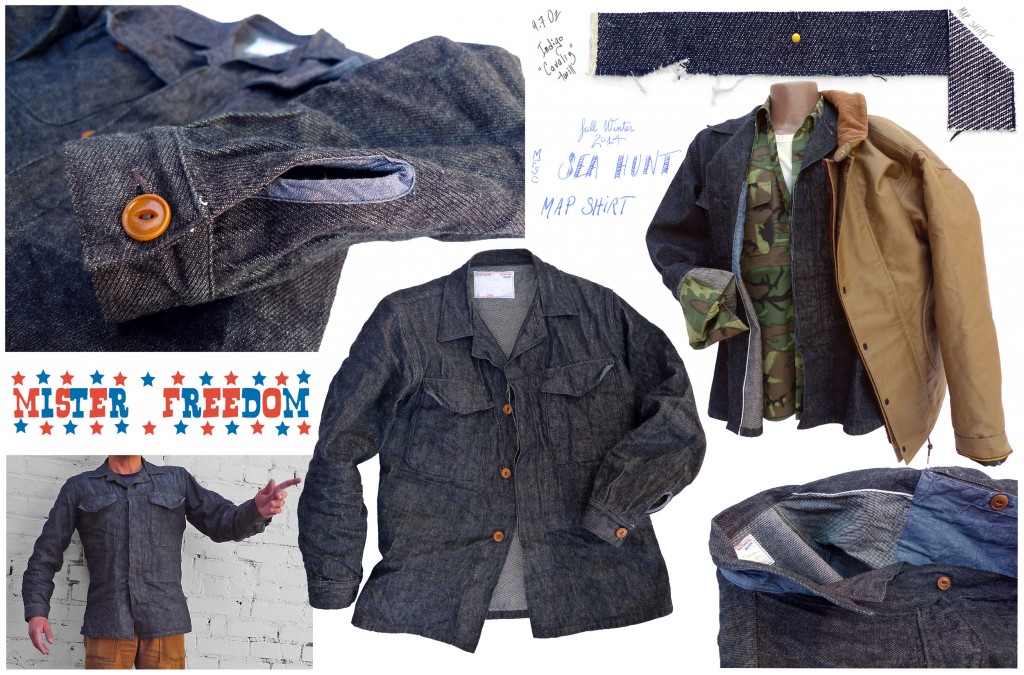
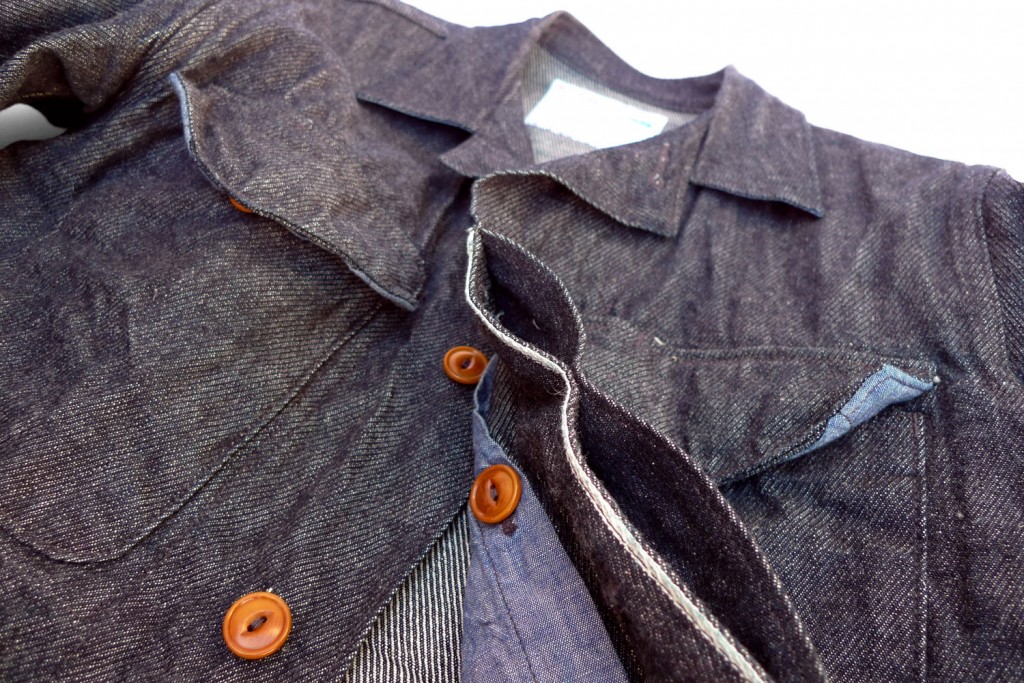
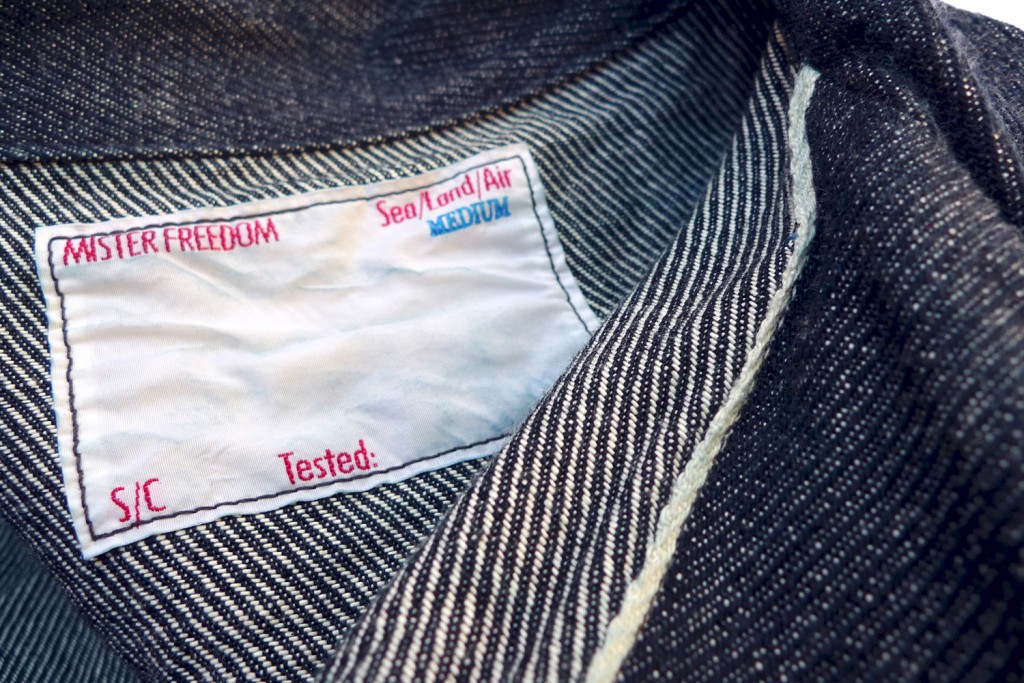
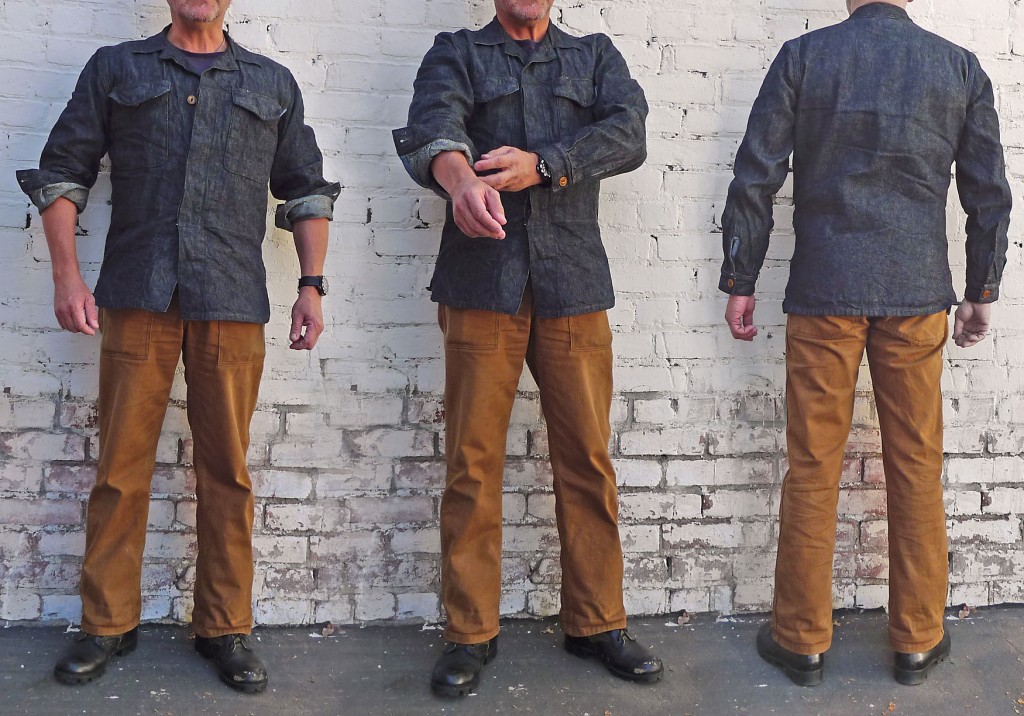
Map Shirt, Indigo ‘Cavalry Twill’ issue
“Sea Hunt” mfsc Fall 2014
Here is numéro deux in our Map Shirt family, its pattern still inspired by the M1953 “Gomer Pyle” Utility Shirt issued to the Marine Corps in the 1950’s.
This time nothing to do with frogs, if not for the fact that ‘Cavalry Twill’ shares its origin with tricotine, a double twill the French came up with around 1886.
After handing over to our friends at Sugar Cane a small swatch of vintage indigo cavalry twill from the Mister Freedom® textile archives, all we had to do around here was sit quietly and wait for DHL to deliver a sample of the new milled fabric… What came out of the Japanese mill tasked with duplicating our swatch was this obscure and dark selvedged denim-like twill…
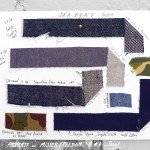 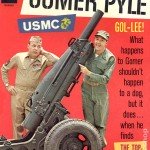 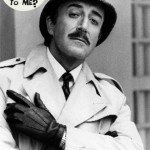
It kind of looked like denim but was not technically denim, i was told. Someone started to technically explain me what made the indigo warp over the double weft a specific twill, in japanese, but I mentioned I had a 06:30 to get a tattoo.
If the resulting fabric looked more blackish-grey than indigo blue, a simple wash test settled all doubts we had a new ‘awsome‘ fabric for Fall 2014.
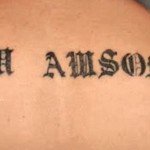 My awsome tattoo Back to our Map Shirt. The overall pattern is similar to its ‘frog skin’ sister, with a few adaptations, such as the use of the twill fabric selvedge on the two front panel folds and on the buttonhole placket. But only you will know.
The Cavalry twill Map Shirt is designed in California by Mister Freedom® and manufactured in Japan in collaboration with Sugar Cane Co. Fabric milled in Japan.
SPECS
FABRIC:
100% cotton indigo ‘Cavalry twill’, 9.7 oz., solid white selvedge ID.
DETAILS:
* Pattern inspired my 1950’s UMSC-issued utility shirts.
* Comfortable over-shirt fit.
* USN-type chambray accents (collar facing, wrist gussets, pocket flap facing, inside pockets)
* Two chest pockets with flap closure.
* Concealed button front closure.
* Selvedge button hole placket and front panel fold.
* One large map inside pocket, side opening.
* One concealed chest pocket, top opening.
* Light brown corozo buttons.
* Flat-felled seam construction.
* Tonal 100% cotton thread stitching.
* Made in Japan.
WASHING/SIZING:
This garment comes raw/unwashed and will shrink to tagged size after an original cold soak/line dry.
I soak mine, spun dry and wore it damp to shape it, just because it is still 105 in California. It fully dried on a hanger overnight and was crispy in the morning. Poifect.
Our Map Shirt is intended to be quite a comfortable fitting top, easy to wear over a chambray shirt, a Tshirt, or a Batman costume when it’s that time of the year.
If you are a Medium in mfsc jackets/shirts, you are a Medium in the Map Shirt.
Maximum shrinkage to be expected with the use of hot water and heat dryer, but is NOT recommended, as unnecessary loss of indigo dye and unattractive color marbling will occur.
This indigo cavalry twill fabric should be treated like premium indigo denim, as it will bleed, shrink/stretch, and fade with normal wear and subsequent washing.
When needed, hand wash in cold water with mild detergent and line dry.
Please refer to sizing chart for raw/rinsed measurements.

Available Raw/unwashed
Sizes S,M,L,XL,XXL
Retail $349.95
Available from www.misterfreedom.com
Please call 323-653-2014 or email sales@misterfreedom.com with any questions not answered above.
As always, thank you sincerely for your support
Mister Freedom® Fall 2014 head-gear
The Watch Cap & Boonie Hat
New Old Stock Gov’t Issue surplus
Just because it appears I lost mine recently is a good reminder that you should protect yours.
So here is a selection of covers we’ve dug up for Fall 2014, some New Old Stock Mil-Specs surplus items.

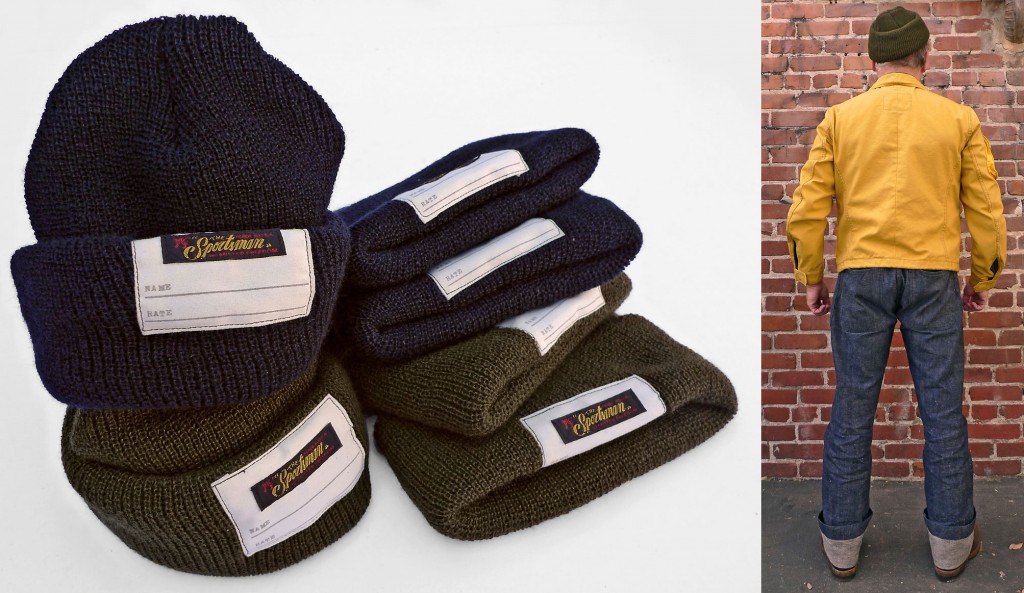

CAP, KNIT, WATCH
Made in USA
We could have gone the DIY Mattel route but decided instead to acquire stock from the fine folks manufacturing them for the US Government.
Our wool caps are knitted on a circular knitting machine the size of Soyuz 19, and about as easy to operate I’ve heard.
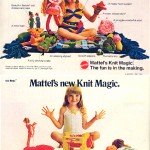 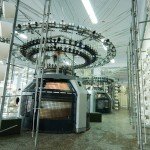
Please note that our watchcaps are not reproductions of the original 1940’s A-4 type knit hats issued to USAAF mechanics, as there are already reputable companies offering these.
Our caps are following contemporary US military specs and standards, and are still available today from PX.
We’ve customized this standard issue a bit, adding an ID cloth label, as we had done in 2008 with our old school USN-style watch cap. Admittedly not as useful as a LED flashlight, our ID patch can be customized according to your preferences. This label is not intended as a billboard and is ‘strategically’ positioned on the tubular knit in order to be partially concealed when the cap is worn with the double fold method.
A wool hat won’t turn anyone into Steve McQueen or Jack ‘Bunny’ Nicholson, but will keep your head warm while you keep your cool.
According to how you sport this hat, it will go from ski hat to commando cover… to everything in between.
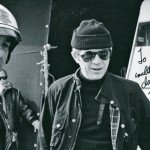 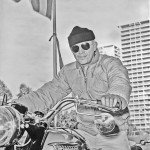 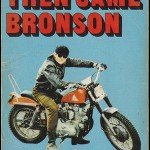 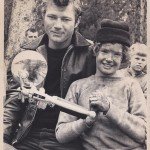 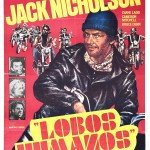 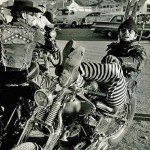 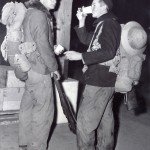 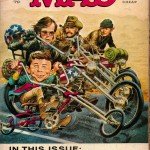 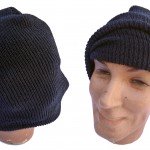
(Warm thanks to Sam Cox at WMM for sending above WW2 Seabees photo)
US Gov’t surplus, manufactured in the USA.
SPECS:
* Two ply worsted 100% wool.
* Dark navy blue or Olive Green.
* Circular knit (no side seam).
* Four darts crown.
* US Mil-specs.
WASHING:
Professional dry clean only. This is a wool item, do not machine wash or put in a heat dryer.
Hand washing with eco-friendly wool detergent (such as “Ecovert Delicate Wash”) is possible but might result with stretching or shrinking of the knit hat, to be done at your own risks.
MF® Wool Watchcap available UNISSUED
Color options: Dark navy blue or Olive Green
One Size fits all.
Retail $39.95
And now this one…
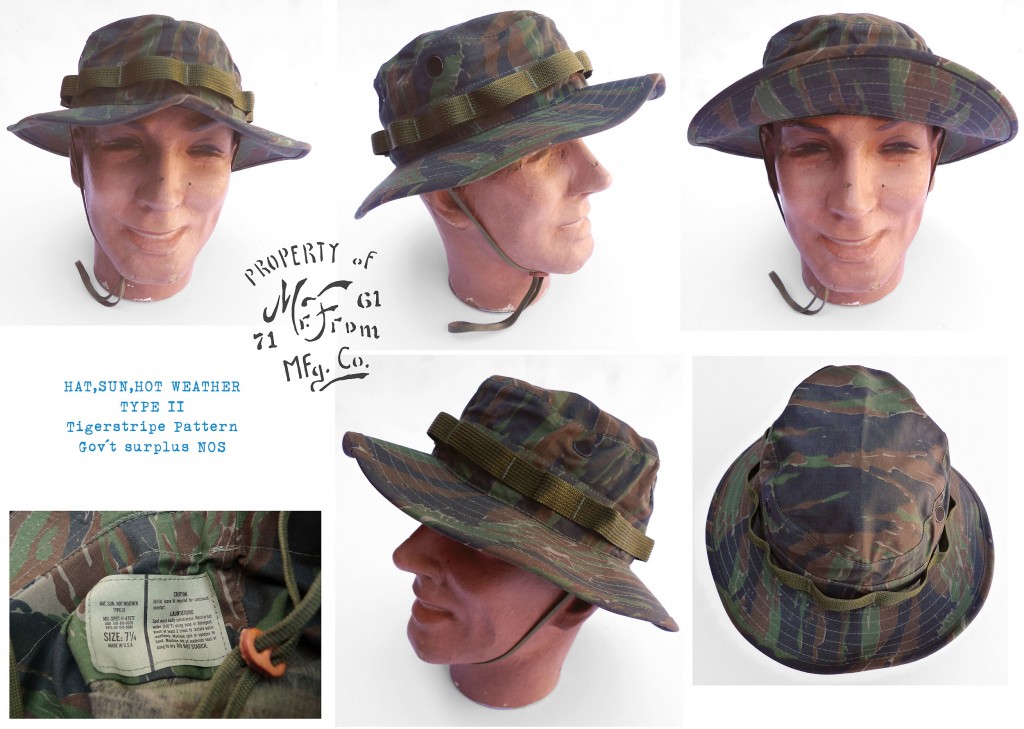
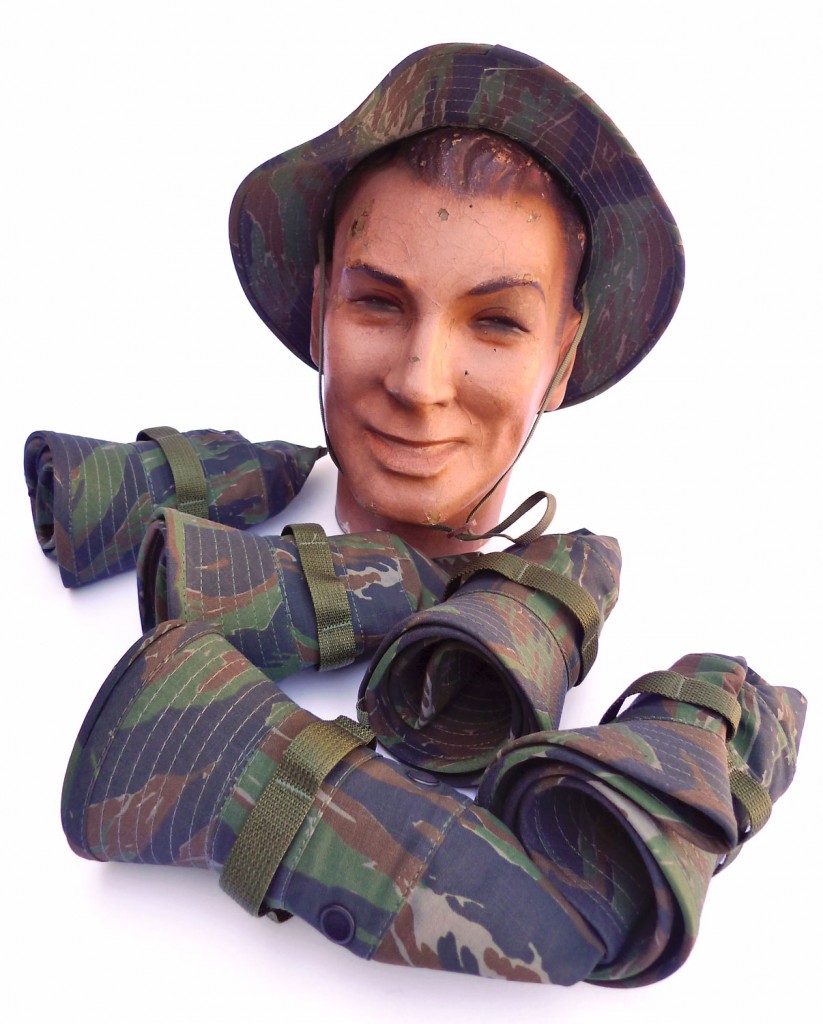
-
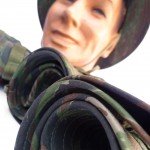
-
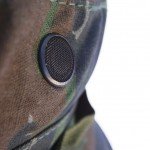
-
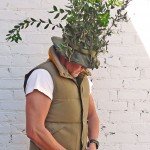
-
Fashion Tutorial #1
-
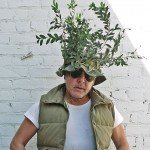
-
Fashion Tutorial #2
-
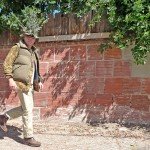
-
Fashion Statement Field Testing
HAT, SUN, HOT WEATHER
TYPE II
Made in USA
Sometimes you gotta love the military for not calling a spade a “spatulous device for abrading the surface of the soil” (Joseph Devlin, 1910).
An E-tool is an E-tool. There it is.
What we have here is a “HAT, SUN, HOT WEATHER”. You’d think there wouldn’t be much to add after this.
Watch me.
This hat finds its origin with the bush-worn felt hat popular with the British troops and Australian diggers in the early XXth Century. The British military replaced felt with cotton fabric around 1944 in order to provide a more practical and durable hot weather hat.
During the Indochina conflict, the chapeaux de brousse, a hat resembling a sort of quilted cowboy hat with a snapped brim, came out. These were often locally made from recycled uniform, parachute or tent camo fabric and favored by French colonial troops and their local VNA allies alike.
Following the (official) US involvement in Vietnam in 1965, an urgent need for proper tropical field equipment ensued. Around 1967, a new hat pattern was developed and adapted from its predecessors in the Natick labs of Massachusetts…
The “HAT, SUN, HOT WEATHER” was to become a US military standard issue, available in OD popeline, ERDL, multi cam… or pink camo, according to where you shop.
The overall design has not much changed today, and this hat is still issued to combat troops.
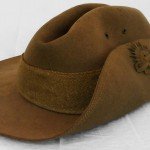 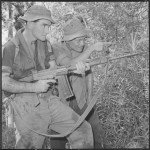 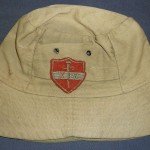 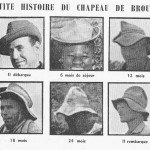 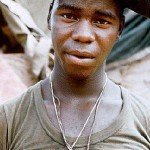 
These covers are often referred to as boonies, because less common on Wall Street than the in boondocks.
In the 1960’s, they earned their stripes on US Special Forces incursions in humid South-East Asia jungles. I have read somewhere that on night patrols, the dome shape of the steel helmet left too much of a target silhouette for VC snipers. Floppy hats were thought to be a better option, as they blended more efficiently with the natural shapes of the jungle. To accentuate that effect, the brim was often chopped-off and the edges frayed, as many period photos show. These boonies were soon associated with LRRPs, RECONDOs… along with the rest of the salty in-Country crowd. The boonie hat was originally were a statement of bad-assness. They were also worn by ARVN troops and Australian units before being adopted by more branches of the military.
These hats were as popular with troops as they weren’t with the higher-highers, too floppy in appearance for the starch-obsessed.
But they worked, and Vietnam would prove out a fine theater for all kinds of liberties with outfits and behaviors.
The hatband was designed to hold branches or strips of fabrics for field concealment while on raid. That piece of tape also made a fine display for grenade rings, pins and other goodies, when you took your party hat to town.
The four mesh-screen eyelets on the crown allowed air circulation while preventing bugs to p*** you off any further while humping through rice paddies. The hat rolls up in a conic shape, making it easy to carry around in a bag pocket. The crown is shorter in front than in the back, which gives it a specific profile and ‘attitude’.
-
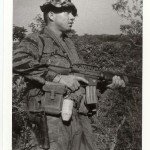
-
Darrell G Moe Elmore, Project DELTA Recon (May 1968)
-
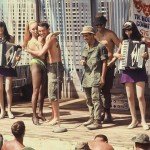
-
Meanwhile, USO Show Vietnam tour (October 1968)
-
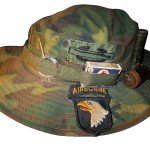
-
Party hat
-
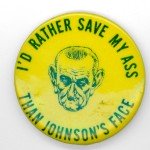
-
Poetry
Photo on left courtesy of Darrell G Moe Elmore, Project Delta Recon (May 1968) via this forum. Regarding the bush hat he is wearing on the photo, Mr. Elmore mentioned “I lost it during the summer of 68 while we were fighting in the Saigon area with the ARVN 81st Airborne Rangers. I never got another to ‘break in’ like it”… Thank you for your service Sir, and for letting us feature this BA photo!
Other photos eBay/public forums.
But lets get back on point with the NOS model we are offering for Fall 2014. Our specimen here is an original Government issue, to the best of my knowledge, and I’ve been known to have my foot in my mouth up to the knee at times.
The fabric feels like NyCo (mil-specs 50% nylon/50% cotton). The camouflage is of the tiger stripe pattern family. I am quite uncertain about the actual vintage of this issue, as research based on the procurement label was more confusing than enlightening. A great deal of infos can be found here for the investigating kind, as well as in several books, such as “Les Paras Francais en Indochine“.
I am guessing these might be an older stock from the 1980’s? In any case, they are USA made, as opposed to the countless ‘imports’ available from most Army-Navy stores today.
We were lucky to score two good size options: 7 and 7 ¼
US Gov’t surplus, manufactured in the USA. Limited supply.
SPECS:
* Tiger stripe camo pattern
* Mil-specs NyCo rip stop fabric (50% nylon/50% cotton)
* 2 ½ ” wide brim
* Adjustable chin-strap, leather toggle
* Vent mesh-screen eyelets
* Foliage ring hatband.
* Made in USA
WASHING:
Hand wash when necessary, hang dry. Minimal to no shrinkage.
Available UNISSUED
Pattern: Tiger stripe
Sizes: 7 and 7¼
Retail $49.95
While stock lasts, both the watch cap and boonie hat are available from our Los Angeles store and online from www.misterfreedom.com
Call 323-653-2014 or email sales@misterfreedom.com with any question unanswered above.
Thank you for your patience and support 😉
|




